Bars in Bristol
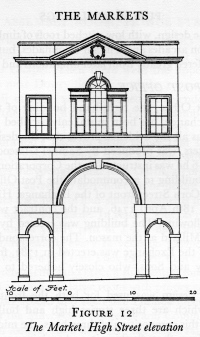 britishfoodinamerica recently sent a flying column into Bristol to reconnoiter the terrain for architecture and public houses. We also found time to have dinner at The Albion; the review appears in the critical. Unlike some of its staffers, bfia is not primarily infatuated with the history of building design, so we will cut to the primary subject and try to minimize digression.
britishfoodinamerica recently sent a flying column into Bristol to reconnoiter the terrain for architecture and public houses. We also found time to have dinner at The Albion; the review appears in the critical. Unlike some of its staffers, bfia is not primarily infatuated with the history of building design, so we will cut to the primary subject and try to minimize digression.
This was an incursion rather than a campaign, so we only found time to visit four public houses, one in the center, one in Hotwells (one of the better, if not best, names for any urban neighborhood anywhere) and two in Clifton. We chanced by another Clifton place, The Alma Tavern and Theatre, which displayed an interesting menu and looked nice, but we had no time to try the food. Too bad; they cure their own sausage; serve potted smoked mackerel; rarebit with something called “doom bar,” which also goes into their fish batter and of course is a beer, from Cornwall; 5 hour pork belly; and a local game pie among other things. They actually run a theater upstairs too (but the dreaded ‘dinner theater’ combining the distraction of bad food with forgettable acting).
It must have been beginners’ luck or random walk theory in action, unless Bristol has no bad pubs, because we liked all the establishments we did manage to visit.
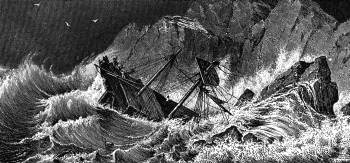 We zipped in and out of The King William, a rambling dump off of Queen Square hard by the ‘floating harbour,’ a series of locks, pools and docks cut into the Avon at the turn of the eighteenth century to keep the port viable despite a tidal reach of fifty feet in the treacherous river. During the age of sail, oceangoing ships were obliged to await the conjunction of wind and tide to dash upriver or face destruction; many were wrecked. The dash required superb seamanship, and according to shipwright Jennifer Harner of Bluewater Marine Consultants, gave rise to the term “Bristol fashion” to describe a well-handled ship. Eventually, as the scale of ships and number of wrecks increased, the city gave up on its floating harbor and moved the port downstream to the Severn.
We zipped in and out of The King William, a rambling dump off of Queen Square hard by the ‘floating harbour,’ a series of locks, pools and docks cut into the Avon at the turn of the eighteenth century to keep the port viable despite a tidal reach of fifty feet in the treacherous river. During the age of sail, oceangoing ships were obliged to await the conjunction of wind and tide to dash upriver or face destruction; many were wrecked. The dash required superb seamanship, and according to shipwright Jennifer Harner of Bluewater Marine Consultants, gave rise to the term “Bristol fashion” to describe a well-handled ship. Eventually, as the scale of ships and number of wrecks increased, the city gave up on its floating harbor and moved the port downstream to the Severn.
Queen itself was the first square laid out in the city and remains the biggest. It has been diminished, first by the Luftwaffe and then by consequent modernist infill, but a good proportion of structures built over the course of ‘the long eighteenth century’ survives. The square never was architecturally flamboyant like Belgravia or nearby Bath but the stolid four-story simplicity of the houses gives the huge perimeter a quiet, almost moving grace in spite of the depredations of war and stupidity.
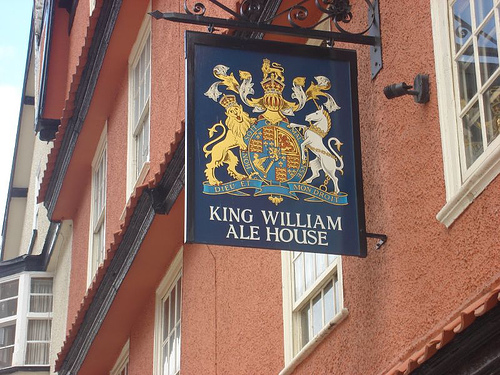 Back inside The King William, which fills its entire block from street to street and includes a number of bars and many taps (it is big, too big, but lovely in its faults), we found coal grates and amiable punkers playing board games; this is Bristol, not East St. Louis, and if most of the center has lost much of its ancient glory and lacks architectural conviction, it no longer is a sump of crime or blight.
Back inside The King William, which fills its entire block from street to street and includes a number of bars and many taps (it is big, too big, but lovely in its faults), we found coal grates and amiable punkers playing board games; this is Bristol, not East St. Louis, and if most of the center has lost much of its ancient glory and lacks architectural conviction, it no longer is a sump of crime or blight.
We spent considerably more time in Hotwells and Clifton. Hotwells is decidedly scruffy and even decrepit, a sort of boho adjunct to elegant Clifton up the hill. There are not many trees or children here. The area does not appear to have been fashionable historically; some of the rowhouses are a mere bay wide, and the topography is so steep that descending some streets induces vertigo. As a result, front steps can reach the scale of oversized stairways. Their proportions are clumsy. Some of the peeling stucco is painted in pastels and primaries, which also appear elsewhere in central Bristol.
Hotwells was the home of one of the more lovably eccentric scientific institutions founded by a lovable figure during that long eighteenth century, an era that Richard Holmes calls ‘The Age of Wonder’ for its fascination with experimentation and inquiry. Miranda Seymour has described Thomas Beddoes “as an amiable eccentric, a warm-hearted physician whose Pneumatic Institution spawned the life-enhancing substance known as laughing gas.” Unlike generations of American undergraduates, his fascination with amyl nitrate was not entirely frivolous, although Southey, in full collegiate flow, found that the gas “makes one strong and happy, so gloriously happy! O! Excellent airbag!” (“Provider of Instant Hilarity,” Literary Review, August 2009) Beddoes experimented with the gas in an effort to fight tuberculosis, especially among the poor, and if these efforts and his fascination with meat smells, cow breath and oxygen proved fruitless in eradicating the disease, the work prefigured inhalation therapy and did no harm.
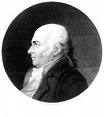 Most people who think of Beddoes at all think of him as a crank, and the Institute was satirized by the great Gillray and others, but Seymour contends that Beddoes was “one of the most formidable polymaths of an intellectually adventurous age.” (Seymour) Beddoes was not only a doctor but, [u]nusually in an age of doctors who specialized in fleecing wealthy and credulous invalids, he sought to improve the health and welfare of the poor.” He published an encyclopedia of botany, translated medical and scientific texts (from six languages) and conducted geological research. This doctor did not neglect the humanities; he was an authority on eastern religion and western literature too. (Seymour) It seems he was a very kind man who shared our affection for a quirky urban enclave.
Most people who think of Beddoes at all think of him as a crank, and the Institute was satirized by the great Gillray and others, but Seymour contends that Beddoes was “one of the most formidable polymaths of an intellectually adventurous age.” (Seymour) Beddoes was not only a doctor but, [u]nusually in an age of doctors who specialized in fleecing wealthy and credulous invalids, he sought to improve the health and welfare of the poor.” He published an encyclopedia of botany, translated medical and scientific texts (from six languages) and conducted geological research. This doctor did not neglect the humanities; he was an authority on eastern religion and western literature too. (Seymour) It seems he was a very kind man who shared our affection for a quirky urban enclave.
Today, if you did not know otherwise, you might mistake Hotwells for dangerous. Instead, it is peopled by students, artists and others who have more creativity than roots or income. On these terms it is an appealing enclave.
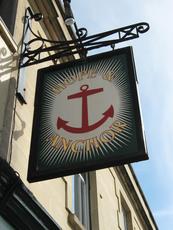 The Hope and Anchor fits right in. It looks like one of those halfheartedly ‘healthful’ places from a ‘70s time warp. The place has earnest, highbacked benches, the plan planked tables are unset and some of the passages between them are awkward. The shabby dress of the young, male staff matched the facades of Hotwells in elegance on the day of our visit, and was not intended as a fashion statement. As with its neighborhood, however, a superficial impression of the Hope & Anchor is deceiving. It is plain but not grubby, and the big festoons of hops over the doorway, along the blackboards (no menus here) and above the bar betray no cobwebs. The bartenders are helpful, the service efficient and everyone takes the food seriously. This is not so much a gastropub (is there even the halfhearted but obligatory wine list?) as a public house that has decided to serve good food without frills.
The Hope and Anchor fits right in. It looks like one of those halfheartedly ‘healthful’ places from a ‘70s time warp. The place has earnest, highbacked benches, the plan planked tables are unset and some of the passages between them are awkward. The shabby dress of the young, male staff matched the facades of Hotwells in elegance on the day of our visit, and was not intended as a fashion statement. As with its neighborhood, however, a superficial impression of the Hope & Anchor is deceiving. It is plain but not grubby, and the big festoons of hops over the doorway, along the blackboards (no menus here) and above the bar betray no cobwebs. The bartenders are helpful, the service efficient and everyone takes the food seriously. This is not so much a gastropub (is there even the halfhearted but obligatory wine list?) as a public house that has decided to serve good food without frills.
We were unacquainted with beers from the Bristol region; a bartender described them for us without prompting as he carefully pumped four free samples for us to taste. No one batted an eye when we mixed and matched soups, starters and mains around the table (granted, this was lunchtime but we got no impression that The Hope & Anchor stiffens up in the evening). The food is sensible more than exotic, powerful rather than nuanced. Soothing soups and sound sandwiches (roast pork with stilton was particularly satisfying) join reasonably priced pies, stews and saut

